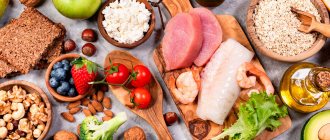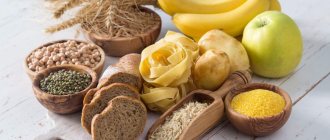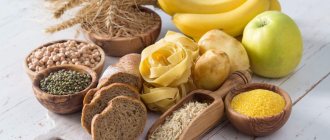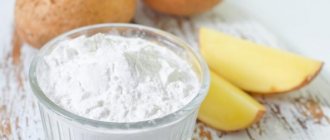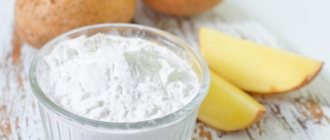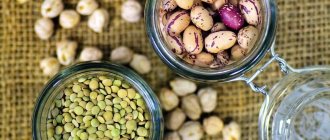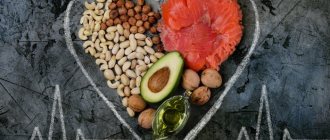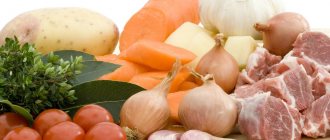What are carbohydrates
Carbohydrates belong to the group of organic substances and necessarily contain a carbonyl group supplemented with hydroxyl components. In fact, carbohydrates are a specific combination of water and carbon that, when combined, form sugars: mono-, di- and oligosaccharides. Low molecular weight carbohydrates is another name for this substance. It is an integral component of most living cells in all living organisms, not only animals, but also plants.
Not everyone knows that the main source of carbohydrates that appeared on the planet were plants capable of photosynthesis. After all, it was precisely because of this chemical process that the first low-molecular sugars appeared, which were later consumed by animals and caused the formation of glycides in their cells.
Interesting! How and for what you can use coconut oil
Why are fast carbohydrates harmful?
Glucose is the main source of energy. Its blood level rises as it is absorbed by the body. In response, the pancreas produces insulin.
If a lot of glucose enters the body, its level quickly increases, then more insulin is produced, even with a “reserve”, especially in people who are already overweight. The necessary glucose enters the cells under the influence of insulin, and the “excess” under the influence of the same hormone – insulin – turns into fat.
But do you remember that insulin was produced “in excess”? Under its continued effect, your glucose level “falls” and you feel hungry and need to eat something else sweet - cookies or chocolate. It turns out to be a vicious circle.
This is how excess weight is gained, and with it fluid retention, stress on the liver, increased cholesterol, narrowing of blood vessels and plaques in them, hypertension and heart disease, diabetes mellitus... And it is extremely difficult to lose weight due to excess insulin, and carbohydrates themselves block the secretion of “ satiety hormone,” and the lover of sweets eats even when he is not hungry. Plus, simple carbohydrates cause addiction, akin to drugs.
Types of carbohydrates
Today, there is a clear classification of carbohydrates that allows them to be divided into separate units.
The most basic breakdown is based on the ability of carbohydrates to undergo hydrolysis reactions.
Thus, we distinguish:
- simple carbohydrates;
- complex carbohydrates.
Simple
Monosaccharides or the simplest carbohydrates, when entering into a hydrolysis reaction, are not divided into simpler components. They dissolve easily in water, but have a solid transparent structure.
In the process of the emergence of such branches of medicine as dietetics or nutritionology, simple carbohydrates began to be called fast, because the rate of their absorption into the blood is quite high. This simultaneously leads to rapid satiety and satisfaction of hunger. But, despite the seemingly positive effect, such carbohydrates also have a drawback. When there is an excess of them in a person’s diet, the process of obesity begins to develop and worsen.
Simple carbohydrates include sugar, glucose, fructose, which is found in fruits, and lactose, the so-called milk sugar.
Interesting! What foods contain healthy fats?
Complex
Complex carbohydrates include both disaccharides and oligosaccharides.
Disaccharides or complex carbohydrates are multicomponent organic compounds that, during a hydrolysis reaction, break down into 2 molecules, each of which is a separate monosaccharide.
But oligosaccharides can have from 2 to 10 constituent monosaccharides in their structure.
Complex or slow carbohydrates are a more valuable dietary source of energy. This is primarily due to absorption processes, which proceed slowly, since a polysaccharide molecule entering the human gastrointestinal tract must first be broken down into simple sugars and only these will subsequently be absorbed into the body. Thus, more calories are spent on the process of digesting polysaccharides compared to simple carbohydrates. Therefore, the number of calories that the human body ultimately receives will be less. But the feeling of satiety lasts much longer, because polysaccharides gradually break down into simpler components. This means that the digestion process with them will take longer.
Complex carbohydrates, or oligosaccharides, are found in all cereals, and are especially abundant in unrefined grains that have retained their outer shell during processing.
Main sources of slow carbohydrates
The highest concentration of slowly digestible organic compounds with the chemical structure of polysaccharides is present in bread and pasta products, cereals and various cereals. These products have a high concentration of starch. Its breakdown into monosaccharides, including glucose, occurs as a result of hydrolysis. Starch takes a long time to digest because it has a special molecular structure.
Bread products should be consumed with caution. They are not all harmless to the figure. White bread contains compounds with a high glycemic index, and, therefore, the product is quickly absorbed and provokes the accumulation of fatty deposits. Only those pasta and breads for which the dough was made from coarse grains, in other words, have undergone minimal processing, are considered healthy.
Corn and potatoes also contain a large amount of starch, but are foods with a high glycemic index. It is recommended to limit their consumption, especially for those who are losing weight. Among natural sources of starch, preference should be given to grains and cereal porridges. Pearl barley, oatmeal, and buckwheat are especially valuable.
The listed cereals have the lowest GI. One serving of buckwheat, oatmeal or pearl barley porridge allows a person to feel full for a long time, as well as full of energy and strength, which is a direct consequence of the action of slow carbohydrates.
Nuts and legumes contain much less starch but are rich in fiber. The latter is required to maintain the normal function of the digestive system and cleanse the body of harmful toxins and waste.
What role do carbohydrates play in the human body?
Once we have determined what carbohydrates are and what major foods they are found in, we need to understand the process that occurs in the human body after these components enter the digestive tract. This way we will be able to assess the value of oligo- and polysaccharides for the functioning and maintenance of optimal human life in different age groups. This will also allow you to see the difference in their quantity required for people engaged in mental or physical labor.
So, carbohydrates act as the main fuel for humans, providing all energy-consuming processes that occur not only at the level of the whole body or an individual organ, but also at the cellular level. The body of living beings is capable of storing this component internally in the form of glycogen. Most of all it is concentrated in muscle structures and in the liver.
Carbohydrates are necessary to ensure the following life processes and reactions:
- For nutrition and brain growth.
- For the synthesis of amino acids essential for many systems, including muscles and brain structures.
It should be noted that without sufficient carbohydrate intake, the body will not be able to cope with everyday stress. It is this component that provides vigor to all living beings, because from carbohydrates, in the process of certain chemical reactions, glucose is produced, which enters the bloodstream and provides the cells of the whole body with the necessary amount of energy.
Sample menu for the week
To lose weight, you need to eat small meals and be sure to have breakfast. It is better to eat foods with sugars in the morning or at lunch, and make dinner protein-rich. This will ensure weight loss without starvation and unnecessary stress. Dinner should not be late - 2-3 hours before bedtime.
Here is a sample menu for the week:
| Day | Breakfast | Snack | Dinner | Snack | Dinner |
| 1 | Oatmeal and cottage cheese | Bran crispbread, banana | Baked fish and rice, fresh vegetable salad | Slice of ham, cucumber | Green salad, steamed salmon |
| 2 | Omelet, salad, tsz bread | Cottage cheese, nuts | Stewed cabbage with meat, bread | Hard cheese, tomato | Low-fat cottage cheese |
| 3 | Oatmeal with banana, honey or chocolate | Glass of yogurt | Meatball soup | A glass of kefir | Seafood salad |
| 4 | Buckwheat porridge, boiled poultry | Dried fruits | Potatoes with chicken breast, fresh vegetables | Cottage cheese | Vegetable stew |
| 5 | Millet porridge with apples or pears | Fruit salad with nuts | Durum pasta with minced meat and sauce | Slice of boiled pork, cabbage salad | Boiled beef, green salad |
| 6 | Tsz bread toast, cheese, kiwi | Apple charlotte made from tsz flour | Barley porridge, carrot salad | Vegetable stew | Braised breast, cabbage |
| 7 | Oatmeal, egg | Orange or apple | Fish soup | Protein omelet | Low-fat cottage cheese |
The body needs sugars no less than proteins. They're just not all equally useful. If you create a diet of slow, complex carbohydrates and consume them correctly, in optimal quantities, you can not only stabilize your weight, but also reduce it.
How many carbohydrates should you eat per day?
Despite the fact that carbohydrates are a valuable and irreplaceable component of the human diet, their quantity in the menu must be clearly regulated. A deficiency is just as harmful as an excess, so nutritionists, cardiologists, endocrinologists and other specialists in the field of medicine and nutraceuticals advise you to carefully compose your diet so that there is plenty of everything, but no excesses.
When determining how many carbohydrates a person should consume per day, it is important to take into account a lot of factors:
- Height and weight.
- Age.
- Presence of specific diseases, such as diabetes or acidosis.
- State of pregnancy or breastfeeding.
- Childhood.
The amount of carbohydrates in the diet should be from 50 to 60% of the total food consumed. And in grams this is from 250 to 590 g per day.
Nutritionists and dietitians say that a person’s physiological need for this component can be calculated using a fairly simple formula. For every kilogram of body weight, you need at least 13 g of carbohydrates per day, mainly in complex form.
But simple carbohydrates in the menu need to be reduced, because they are quickly absorbed into the blood, causing a sharp jump in sugar. This can negatively affect your health and cause a number of diseases, which will be almost impossible to eliminate in the future.
For weight loss
Those who adhere to a healthy diet and set themselves the goal of losing excess weight need to be very careful not only in the amount of carbohydrates supplied with food, but also, most importantly, evaluate their quality. More precisely, complex carbohydrates should prevail in the menu of such a person in an amount of no more than 20-25 g/day. Beans, brown rice, barley porridge, various greens and other foods with a low glycemic index are suitable for this purpose.
For gaining muscle mass
Those who need to gain muscle mass should reduce their carbohydrate intake to 15 g/day. It is recommended to consume various cereals from the following cereals:
- buckwheat;
- corn grits;
- pearl barley, etc.
It is acceptable to eat a small amount of black bread made from whole grain wholemeal flour.
Otherwise, a layer of fat will always form on top of the muscle mass, which will reduce the definition of the muscles and the aesthetic appearance of the body.
For pregnant
It is important for pregnant women to consume the correct amount of all necessary substances, including carbohydrates, since an imbalance can lead not only to a deterioration in the general condition of the mother, but also to improper development of the fetus. For example, a low amount of carbohydrates in the diet of a pregnant woman can cause fetal hypoxia, and an excess can contribute to the formation of a too large baby, which can negatively affect delivery.
So, in the first half of pregnancy, it is necessary to limit the upper threshold of carbohydrate intake for pregnant women to 462 g per day.
In the second half of pregnancy, you can increase the amount of carbohydrates consumed, but try to maintain the range from 374 to 500 g per day.
For diabetics
It is important for diabetics to know which foods contain a lot of carbohydrates so that they can properly structure their diet without overloading it with this component. After all, excess glucose that enters the blood of people with a similar disease can lead to hypoglycemic coma.
Therefore, it is necessary to count the amount of carbohydrates and not exceed the norm of 130 g per day for simple carbohydrates or 200 g per day for complex ones.
Video dessert
A very educational video in which you will learn not only about the benefits and harms of complex carbohydrates, but also simple ones, and you will also learn what the glycemic index is.
The amount of carbohydrates in 100 g of pumpkin is 6.50 g (fiber + starch + sugars)*. In terms of carbohydrate content among all products, pumpkin ranks 562nd.
>’> >’> >’> >’> >’> >’> >’> >’>
| № | Amount of carbohydrates | Share of daily value per 100 g | |
| 559 | Boiled kohlrabi (cabbage) | 6.7 g | 2,2% |
| 560 | Fresh broccoli | 6.6 g | 2,1% |
| 561 | Fresh onion | 6.5 g | 2,1% |
| 562 | Raw pumpkin | 6.5 g | 2,1% |
| 563 | Turnips raw | 6.4 g | 2,1% |
| 564 | Fried shark meat | 6.4 g | 2,1% |
| 565 | Fresh parsley | 6.3 g | 2,0% |
| 566 | Raw goose liver | 6.3 g | 2,0% |
| . | ||
What foods contain simple carbohydrates?
Simple carbohydrates include foods that contain sugars in the form of monosaccharides. They break down fairly quickly and enter the bloodstream, causing a spike in blood sugar. This causes rapid satiety and a surge of energy, but this state does not last long and is quickly replaced by a feeling of hunger. A person then feels exhausted if there were no other categories of foods in the diet.
Simple carbohydrates are contained in maximum quantities in the following list of products, table:
| Name | Glycemic index |
| Chocolate candies | 70 |
| Cookie | 70 |
| Carbonated sweet drinks | 70 |
| White rice, pasta, dumplings, dumplings | 65-70 |
| Potato | 65 |
| Beet | 65 |
| Semolina | 65 |
| Confiture, jams, preserves, ice cream | 65 |
The higher the glycemic index, the more simple carbohydrates in the form of pure sugars the product contains.
Report errors and inaccuracies
- Glasses 0.9 cubes 1 glass - how much?
- Weight with waste 142.9 g Waste: seeds, peel (rind) and stem (30% of weight). The calculations use the weight of only the edible part of the product.
Listed below are the nutrient standards that apply to the site.
Carbohydrates are one of the types of nutrients necessary for the functioning of the human body. They are necessary to provide the body with energy. The amount of carbohydrates depends on physical activity, while the part of these substances that is not used leads to an increase in cholesterol in the blood and is converted into fat reserves.
Carbohydrates are a source of energy
List of foods with complex carbohydrates
Complex saccharides are more beneficial. On the contrary, their quantity should be increased in your diet. But to do this, you need to know exactly which foods contain such carbohydrates.
| Name | Glycemic index |
| Corn | 35 |
| Unprocessed rice | 35 |
| Milk products | 30 |
| Lentils, beans | 30 |
| Fresh fruits | 30 |
| Fresh green beans | 30 |
| Chocolate black | 25 |
| Berries | 20 |
More: List of foods that contain healthy carbohydrates
What carbohydrates should you eliminate from your diet to lose weight?
Those who monitor their weight and try to balance their diet, want to maintain health at the desired level, need to know what carbohydrates contain. Only by having a list of products can you prevent a lack of this component in your diet.
To lose weight, you should limit as much as possible the consumption of fast carbohydrates, which are found in various flour products made from wheat flour, sweets, sweet carbonated drinks and packaged juices.
Dangerous properties of carbohydrates
Not everyone knows that carbohydrates also have dangerous properties for human health. Their excess can lead to the following situations:
- Insulin resistance, which can develop into type 2 diabetes.
- Hormonal imbalance.
- Damage to nerve endings, which quite often manifests itself in the organs of vision. This problem can affect the lower and upper limbs. These are so-called microscopic damage to nerve fibers, accompanied by nerve pain, numbness, tingling, blurred vision and narrowing of its field. This condition often occurs in diabetics.
Also, an excess of carbohydrates can provoke an imbalance of microflora in the gastrointestinal tract. This leads to a slowdown in the digestion process and the appearance of bloating.
Signs of lack of carbohydrates
If there is a lack of carbohydrates, a person will experience the following conditions:
- Pathologies of the heart and blood vessels.
- Memory impairment.
- Increased frequency of headaches.
- Muscle cramps may occur.
- Deterioration of a number of cognitive functions, such as concentration and the ability to withstand prolonged intense mental stress.
It is quite easy to normalize this condition in the first stages. You just need to know where a lot of carbohydrates are found, in what foods and dishes, and try to introduce them into your diet once a day. But preference should be given to those that are rich in complex carbohydrates.
How to Eat Carbohydrates When Working Out
It is also worth paying attention to the correct combination and consumption of proteins, fats and, in particular, carbohydrates, before and after training for more effective weight loss. It's no secret that nutrition is the basis for building your dream body. The body must receive enough nutrients for everything to function correctly. What we eat before and after training directly affects the results we ultimately get. Therefore, if you really want to see the effect of your training, you need to adhere to a proper and balanced diet.
First, you should think about the goal that each person pursues when working out in the gym. Everyone has their own goal, their own motivation, their own desired result: simply lose weight, reduce (or, conversely, increase) the numbers on the scale, or reduce the fat layer while maintaining muscle tissue. If the latter situation is meant, that is, reducing body fat by preserving muscle, then the goals would be: reducing the resolution of muscle tissue proteins, reducing muscle glycogen depletion and reducing the level of the breakdown hormone, which is cortisol, after resistance training.
Then we turn our attention to nutrition.
: carbohydrates before training, and definitely complex carbohydrates that will provide you with the necessary energy. Proteins will be used by the body as a source of amino acids for working muscles. The fats you eat should be in minimal quantities.
Eating before starting a workout. What should it be like?
- Firstly, it should be no later than 2 hours before physical exercise, because a full stomach will interfere with a full workout: the blood supply will be directed not to the working muscles, but to the gastrointestinal tract.
- Secondly, the amount of food eaten should be small.
- Thirdly, nutrition should include: protein (this is approximately half a gram per 1 kg of ideal body weight) and carbohydrates (also approximately the same amount per 1 kg of ideal body weight). Carbohydrates should be complex: black porridge, vegetables for fiber and whole grain bread.
What are your post-workout eating goals?
- First, it increases muscle glycogen, which was depleted during training.
- Secondly, reducing the breakdown of muscle tissue proteins. Because if we have a predominance of muscle tissue, then, accordingly, there will be less space left for fat.
- Thirdly, an increase in muscle protein synthesis, simple recovery after exercise and a decrease in muscle soreness.
- And finally, fourthly, the goal after training is to reduce cortisol levels. And, accordingly, based on these goals, it is already worth choosing adequate nutrition. How will he feel about it? All the same proteins and carbohydrates. Only here is it permissible to include a small amount of simple carbohydrates in the diet: fresh fruits, for example, bananas, some vegetables, a small amount of potatoes is acceptable, but its content should be small (about 0.3-0.2 grams per 1 kg of ideal weight).
We recommend
“The most dangerous fats: how they affect health” Read more
Thus, we achieve an increase in insulin levels. This hormone has anti-catabolic properties. In addition, carbohydrates contribute to better absorption of protein and are used to replenish expended energy - glycogen, which will be stored in the muscles. It turns out that if the body does not receive enough carbohydrates after training, then muscle tissue will be destroyed under the influence of catabolic processes.
Thus, it is important to understand that carbohydrates play a vital role in the functioning of our body, providing it with energy and strength, participating in normal digestion and giving us a charge of positive emotions. Our task is to learn how to choose what we eat correctly and wisely.
